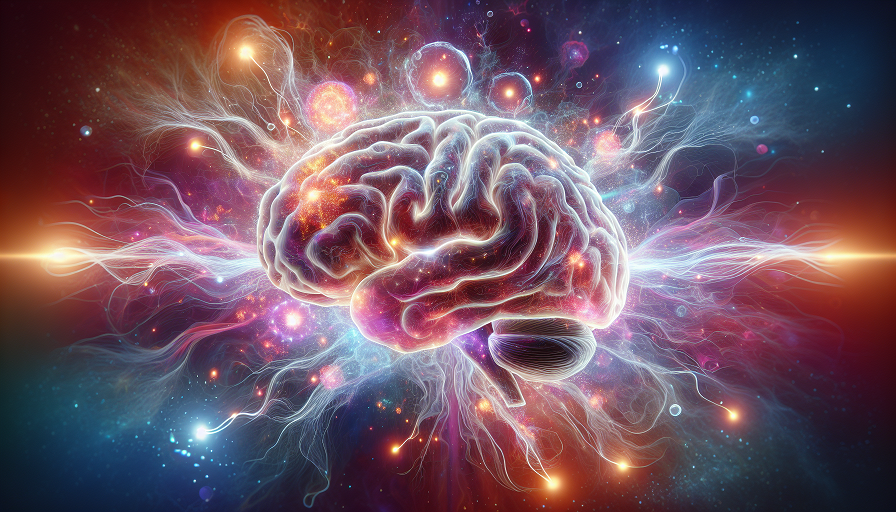
Imagine walking through a house that exists only in your mind. Each room holds vivid, unforgettable details: a flamingo wearing glasses, a sword stuck in a watermelon, a clock melting over a piano. This isn’t a surreal dream—it’s a memory strategy. Now picture talking to someone who doesn’t exist, yet offers advice, comfort, or creative ideas. You’re not losing your mind—you might be enhancing it.
From memory palaces to imaginary companions, the brain often uses fiction not as an escape, but as a function. It creates tools, environments, and characters that live entirely in the mind yet serve practical cognitive purposes. These aren’t just quirky mental games—they’re techniques with roots in neuroscience, memory, and developmental psychology.
Contents
The Memory Palace: Architecture for the Mind
A memory palace (also known as the method of loci) is an ancient technique that transforms spatial environments into storage systems for memories. The idea is simple: you mentally walk through a familiar space, assigning information to specific, vivid landmarks along the way.
Why It Works
The method taps into how the brain naturally remembers:
- Spatial memory—Your hippocampus is heavily involved in mapping and navigation.
- Visual imagery—Visual content is more memorable than abstract data.
- Emotional and narrative encoding—Surprising or bizarre imagery sticks better.
Instead of trying to recall a dry list of facts, you recall a story, a walk, a scene. The journey becomes the data.
Used by Memory Athletes and Students Alike
Memory champions routinely memorize long lists, entire decks of cards, or sequences of numbers using palaces. But students, lawyers, and actors use the same technique for more everyday needs—like memorizing case law, lecture content, or monologues.
Imaginary Friends: More Than Childhood Play
We usually associate imaginary friends with childhood. But the brain’s ability to simulate personalities and dialogues doesn’t vanish in adulthood—it simply evolves. Authors talk to characters in their heads. Entrepreneurs bounce ideas off fictional advisors. Creatives “consult” imaginary critics before finishing a project.
Developmental Purpose in Children
- Practice social skills—Children rehearse conversation, empathy, and conflict resolution.
- Explore emotions—A “friend” offers a safe outlet for complex feelings.
- Boost self-regulation—Kids use imaginary companions to coach themselves through tasks.
Adults often do the same—but with a more intentional twist.
“Dialoguing” With the Self: Imaginary Coaches, Critics, and Creators
Creative and high-performance thinkers often engage in internal dialogue with imagined personas. These may represent parts of themselves, idealized mentors, or even fictional constructs designed to challenge their assumptions.
Fiction That Functions:
- A CEO imagines a skeptical board member to test new strategies.
- A writer hears a character’s voice arguing for a different ending.
- An anxious person imagines a calm, rational version of themselves coaching them through a tough moment.
In all these cases, the brain is using imagination as a tool—not just for escape, but for execution.
Neuroscience Behind Mental Constructs
What’s happening in the brain during these imaginative exercises?
Memory Palaces
Neuroimaging shows increased activity in:
- Parahippocampal gyrus – involved in scene recognition
- Hippocampus – supports spatial memory
- Visual cortex – processes imagined images similarly to real ones
Imaginary Dialogues
Internal conversations activate:
- Prefrontal cortex – executive function and planning
- Temporal-parietal junction – simulates perspective-taking
- Default mode network – engaged during introspection and daydreaming
The brain treats these fictional scenarios as rehearsals, creating or reinforcing pathways associated with action, memory, and emotional regulation.
When Fictional Tools Become Daily Strategies
Examples of Practical Use
- Students: Use memory palaces to prepare for exams or speeches.
- Therapists: Encourage clients to speak with an imagined “wise self” for perspective-taking.
- Performers: Rehearse scenes with imagined audiences or characters to prepare mentally.
- Problem-solvers: Use fictional antagonists to poke holes in an idea before pitching it.
The line between “imagined” and “functional” blurs when the technique gets results. And for the brain, utility often trumps reality.
Can Nootropics Enhance Mental Construct Use?
Using mental palaces or internal characters requires focus, vivid imagination, and cognitive endurance. Certain nootropics may enhance the brain regions and processes involved in these techniques.
Nootropics That May Support Imaginative Function
- Citicoline: Supports memory encoding and mental clarity—ideal for constructing and recalling memory palaces
- Lion’s Mane Mushroom: Encourages neuroplasticity, supporting complex visualization and mental modeling
- L-Theanine: Enhances calm focus, reducing mental noise when navigating inner dialogue
- Bacopa Monnieri: Traditionally used for cognitive clarity and memory stabilization
Combined with deliberate practice, these supplements may help maintain the mental “architecture” needed for functional imagination.
Your brain doesn’t always need the real world to do real work. Sometimes, it builds castles in the mind, holds imaginary conversations, and recruits fictional allies to get through real challenges. Far from being silly, these mental tools are ancient, adaptive, and surprisingly effective.
So whether you’re walking the halls of your memory palace or chatting with your imaginary advisor, remember: if it works, it’s real enough. In the realm of cognition, fiction isn’t just for fun—it’s functional.

